Bare patches in summer???
I’m having such a problem planting up some areas of my garden this summer and I think I now know why. My style of cottage garden planting doesn’t lend itself to what the books and the TV gardeners suggest you do. When they have a big bare patch they position new plants in their pots, stand back, move them around and then plant them all in one go don’t they?
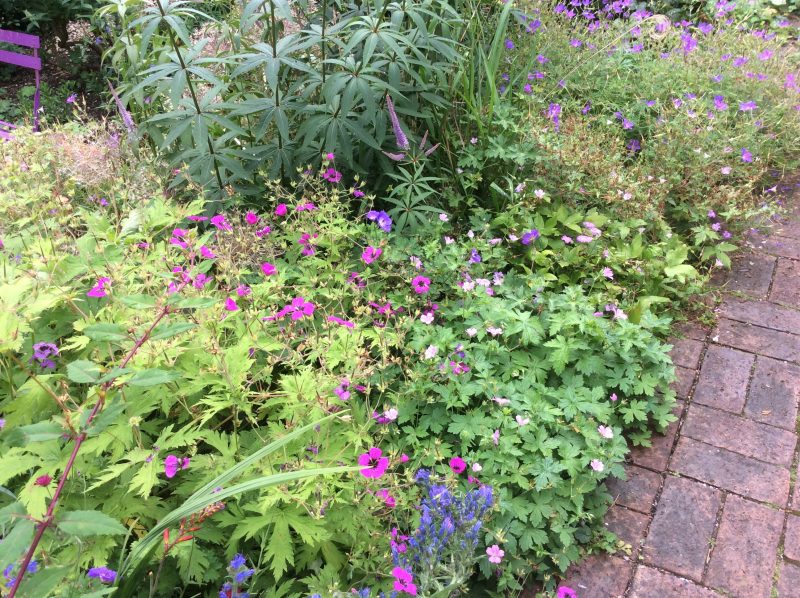
My garden is so closely planted there’s an airy froth of wavy stuff with no soil showing and no gaps. It’s not plants sitting next to each other, they’re all jammed next to each other like people at the front at Glastonbury. (I’ve never been).
No one area has been planted from scratch. When I see a gap the size of a saucer, I squeeze in a plant I have waiting, or lift and divide something or buy something. “Just room for one more I think – squeeze squeeze” is my planting method and that’s how I achieve the full frothy look.
Clearing the ground as therapy
A few weeks ago I cleared a few areas, pulling out sprawling and invading common geraniums and goodness I felt so much better when I’d done it. This left bare soil in so many places that the back garden looked quite empty and colourless.
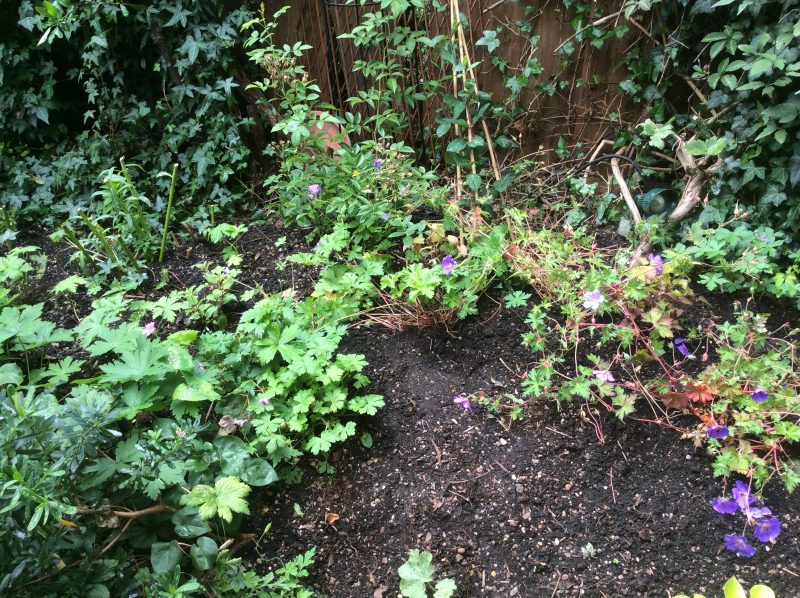
Empty borders in July?
How had it gone from lush fabulousness in May to brown patches in July? The reason I don’t have blowsy roses and full summer colour is simply because I don’t plant those high summer plants so that’s no surprise.In a town garden I wouldn’t want plants that look stunning for a month but have not much going on the rest of the time.
I buy dozens of plants mail order and at garden centres but I’m dithering so much I pop the new plants in spaces elsewhere because I can’t make a decision about the bare spaces. So the crowded bits get more crowded and the bare spaces stay bare.
Plants that sprawl and flop look great en masse but look silly on their own. They look like the first girl at a party standing in the middle of the room in her party frock. (Ooh uncomfortable memories).

This Rozanne geranium needs to be surrounded by similar perennials to create the look I am always aiming for, of artless frothiness.
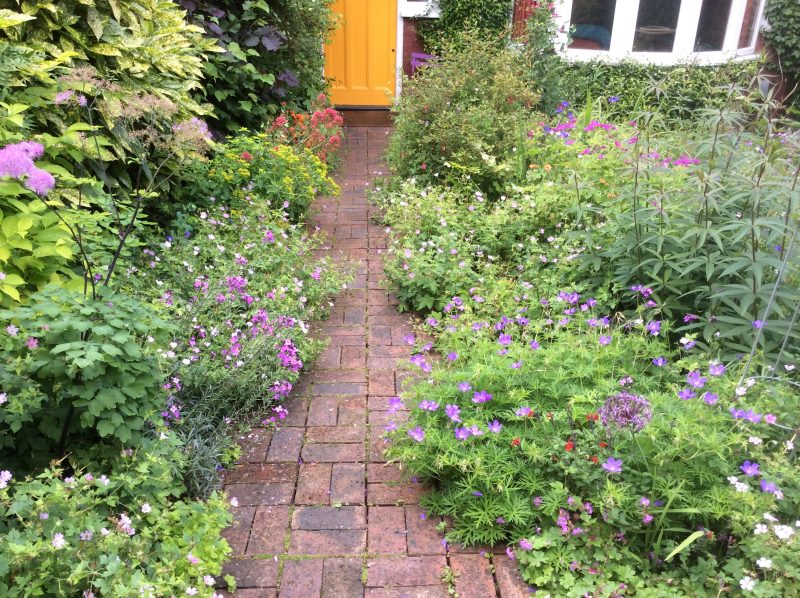
My version of artless frothiness
You’d be amazed how many plants you need per square metre to make a garden look full.
This is what I call full
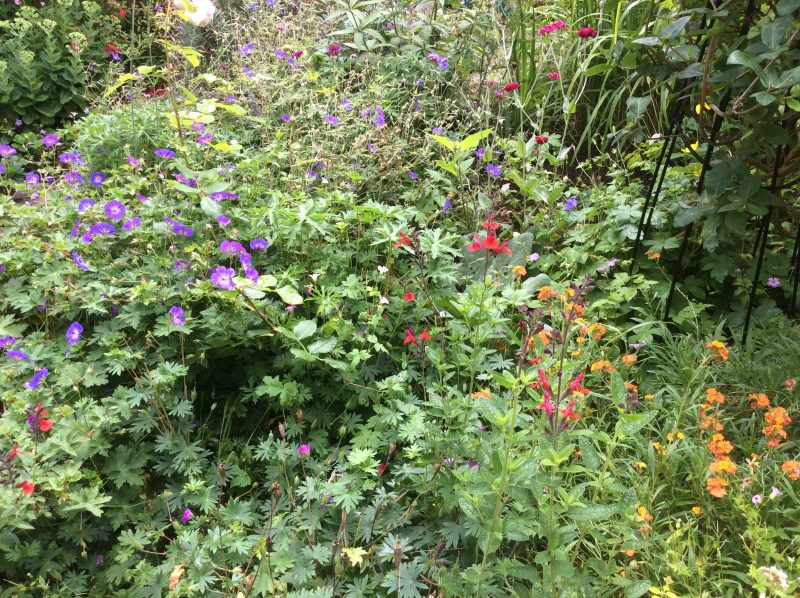
Mail order nurseries
So I have decided to settle for a mixture of plants that look good right now and some that are doing nothing now but will settle in for next year. Some perennials from ballyrobertgardens.com , lots more from bethchatto.co.uk and bluebellcottage.co.uk and some for next year from rosybee.com.
You can’t have everything in a small town garden so I need to keep my style in mind, stick to it and not get too envious of the fantastic displays in bigger gardens. Luckily I don’t like dahlias – surely I’m not the only one!

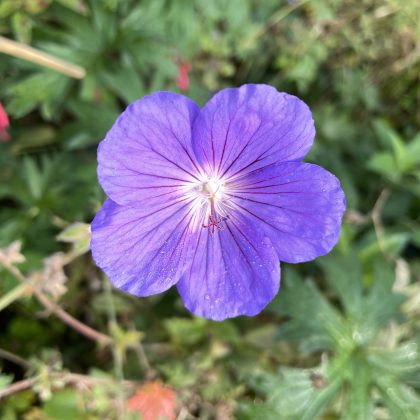
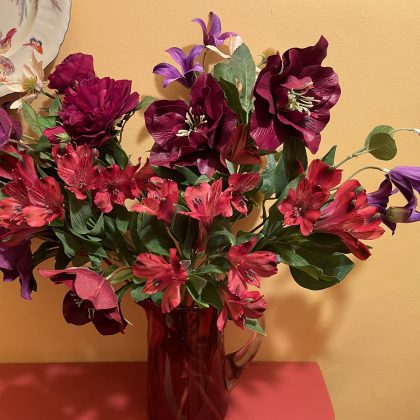
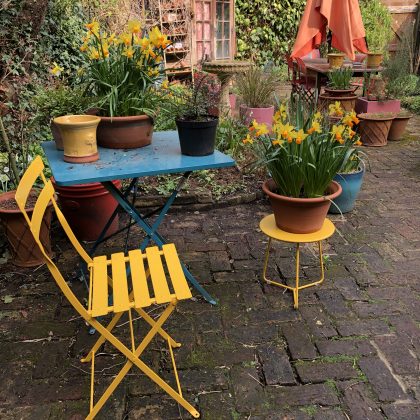
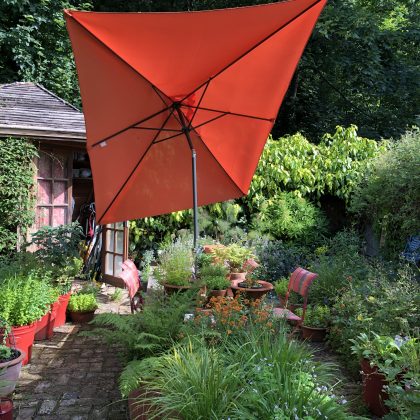
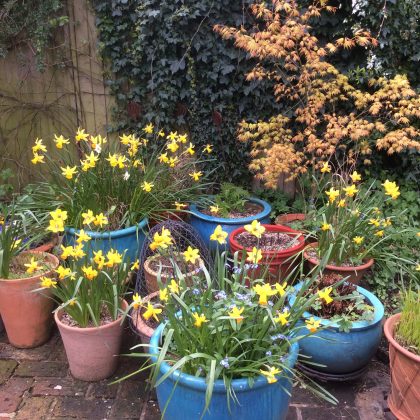

Perhaps you might look at the single open faced dahlias. They are gorgeous and so easy. And great for all pollinators too. I wouldn’t be without them.
That’s a lovely suggestion and I agree the simple ones are super – I admire them in others’ gardens. The price of having those would be major slug control which I’ve decided is one job I just don’t want so I’ve had to make that compromise. I don’t grow anything that slugs want to eat so I don’t have a problem with slugs. I just leave them to do their thing. Maybe one day I’ll take a risk. Thankyou for commenting, and I hope your garden is looking lovely this summer.
I love your artless frothiness style – it is just like mine! I hate to see bare soil anywhere in my garden, and immediately cram something else in to fill up any gaps. Consequently some smaller things, helianthemums and “silver posie” thyme, have got a bit lost beneath bigger plants like alchemilla mollis and bergenia which insist on taking over my raised beds.
thankyou so much Helen, I love that word cram. That’s just what we do isn’t it but as you say, some things never get going and just give up the ghost. I find so many little 9cm pot shaped plants that had never put out any roots but that’s worth it to have not a centimetre of bare soil showing. Just bought “The Modern Cottage Garden” book and it’s the best book I’ve ever read on our type of garden. You might like to have a look.